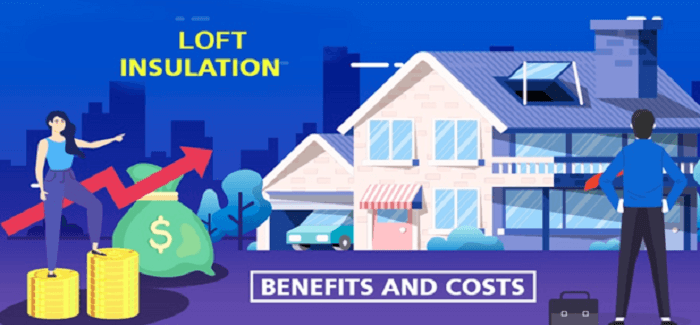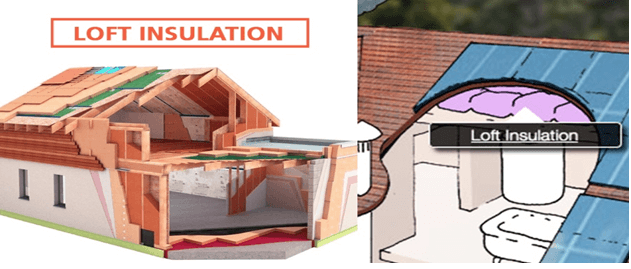Why insulate your loft? If you are a homeowner in the UK, you have probably multiple reasons to opt for an insulation installation in your home, especially the loft area. The loft space can be prone to condensation, especially in the absence of vents, and prove to be damaging for the overall structure of homes as well as for your health and that of difference in your home. Here is a beginner’s guide to loft insulation that can be very useful for you.
Benefits of Loft Insulation

What are the benefits of insulating your loft?
First and foremost, when you install insulation material in your home, it can help seal your inside space and prevent the entry and exit of air through cracks and holes in the walls. Thus, you need less electrical energy to heat up or cool your home during the winter or summer seasons. You can save a lot on energy expenses over time, and have more money in your pocket.
A compact, air-sealed space can mean more comfort for you. With this simple step, you can ensure better comfort for yourself as well as all others in the area. During summer, the hot air from the outside or the freezing cold outer air during winter can make life unbearable with your home. With proper insulation, such problems can be avoided.
With loft insulation, you can avoid condensation problems as well. Loft condensation issues generally surface when there is too much moisture in the loft area, often due to the entry of moisture from the outside. Loft insulation installers near me agencies can install suitable loft insulation material, such as spray foam insulation, to take care of this problem. You will have no more of condensation problems.
Types of Loft Insulation

What types of loft insulation are there?
Also, read What Are the Simple Steps for Home Renovation?
There are quite a few, including:
- Blanket Insulation – This is the commonest, and is available as mineral, glass, or rock fiber. Foil-backed felt is also available. This is usually the most low-cost option and fits to be used for any insulation purpose, particularly for between joists.
- Loose-fill Insulation – This comprises mineral wool, cellulose fiber, cork granules, recycled newspaper, and other lightweight, loose materials.
- Sheet Insulation – This includes firm natural or synthetic boards, and can be ideal for insulating roof underside. The boards can be decorated and ensure effective loft space insulation. However, it is the most expensive form of insulation.
- Blown-fiber Insulation – This includes various kinds of loose materials, blown-in between the joists, and can be perfect for places that are tough to access.
Each of these has a specific usage and purpose.
How much cost will insulate my loft save me?
The cost of loft insulation varies depending on the size and area, As loft insulation installers will tell you, you could save as much as about 250 pounds every year on your energy bills with complete installation and 150 pounds with loft insulation setup. Around £300 is spent on Loft insulation installation and you can recoup this expense with 2 years of savings on electrical energy.